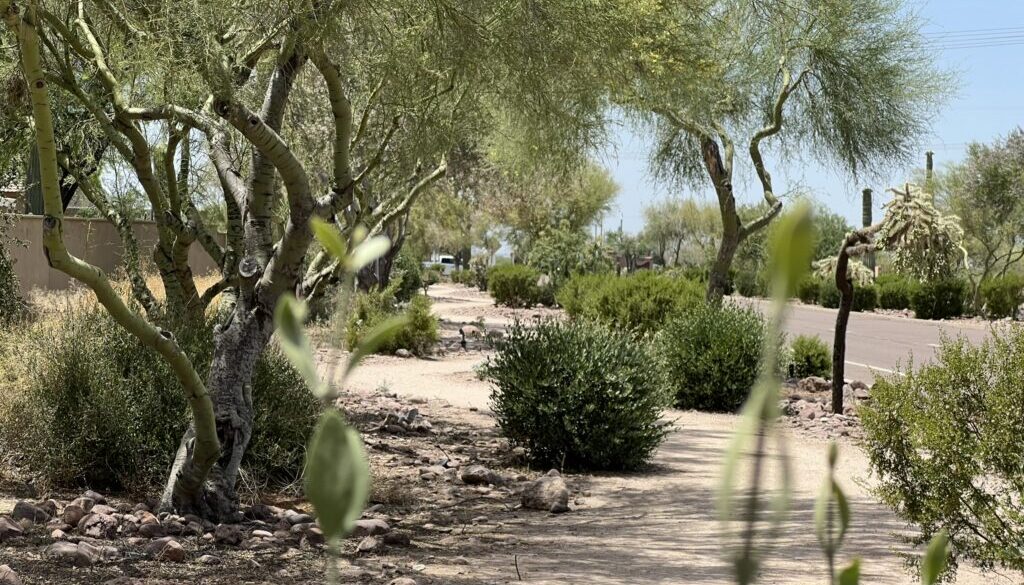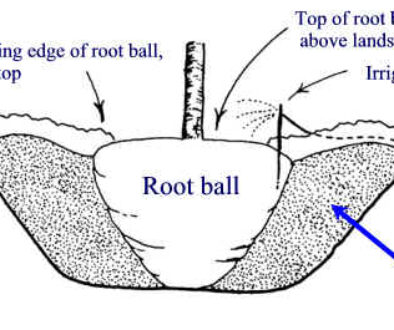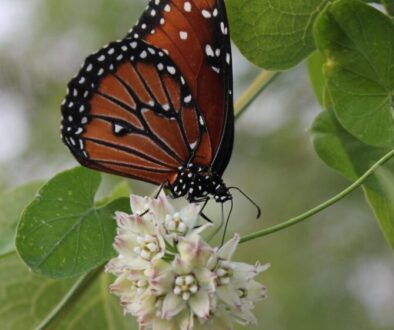Preventing Wind Damage in Desert Trees
The summers in Arizona are characterized by the storms brought on by the monsoons. Whether or not those storms bring rain, they will certainly bring strong winds. Those winds often yield great amounts of broken branches or even entire uprooted trees. While there’s no way to completely prevent wind damage and nobody’s perfect, here are some of the best practices to minimize it.
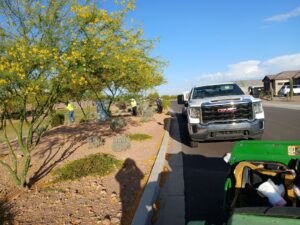
- Structural Pruning. When pruning trees, especially young trees that are establishing their main trunks and arterial branches, a long-term look at the healthiest structure for the tree is necessary. Branches that cross over one another prime candidates for pruning, as they will rub against one another and grow until one or both break from the prolonged friction damage. If two branches or trunks are co-dominant (equally large and splitting off from the same point), whichever one ends up carrying the most weight will be the one most likely to break off during a particularly severe storm with the wind positioned just right. Single-trunk trees are generally better at surviving the wind than multi-trunk ones, but even multi-trunk trees can be structurally pruned to live as long as possible.
- Air Flow Pruning. While structural pruning is about the long-term structure of tree branches and the overall canopy, pruning for airflow is a short-term solution for trees that grow thick canopies very quickly, such as Mesquites and Palo Verdes. Essentially the goal here is to lessen the overall friction in the air by allowing more space for wind to flow between branches. Typically, this involves cutting smaller branches (though with the long-term structural implications in mind) to reduce the thickness of canopy foliage in trees that are deemed vulnerable to strong gusts.
- Proper Irrigation. When young trees are planted, they typically have their irrigation drips relatively close to the trunk to make sure that they can properly establish themselves after the shock of planting. However, the drip should not be left near the trunk for long. Beginning about 6 months after the young trees’ first growth cycles, the drips should be incrementally moved further away from the base of the tree, usually proportionally to the diameter of the trees’ canopies. If drips are not pulled away, the root systems will remain small, despite the growth in canopy size, and they won’t be able to support the weight for very long. This causes LOTS of trees to fall over every summer. You can tell if this was the cause of a tree’s collapse if there are barely any roots connecting to the trunk. Often, improper care at their original nurseries can cause root girdling early on and doom trees right from the start, as well, so it’s important to check the quality of the root flare even for trees in pots at nurseries before you buy. While trees that were girdled in their original containers have little chance of surviving multiple decades, healthy young trees can be given the best chance of long-term survival if the drips are carefully and gradually moved further from the trunk as the canopy expands.
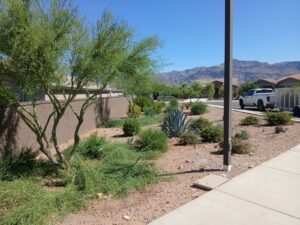
At ELS Maintenance & Construction, we have our own Wholesale Nursery where we grow quality stock with healthy roots, and our Arbor Division ensures that trees in your community have the best shot at surviving the summer winds for years to come. If you know of a community or commercial center that needs new landscapers, email contactus@evergreenaz.com and we can get started!

